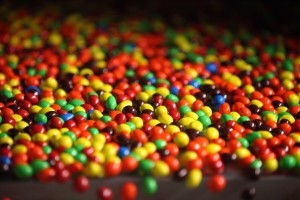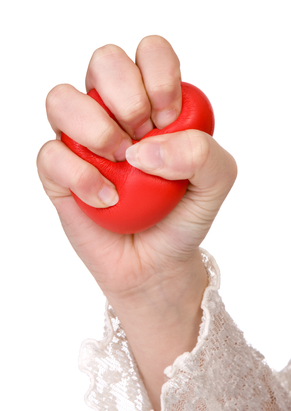Trick or… chocolate and memory!
Credit: Mars Chocolate, Hackettstown
Trick???? Or, Treat?????
Got chocolate on your minds today? Before you raid the candy bowl or your children’s haul for the evening, you may want to consider the following:
Halloween chocolate is not going to improve your memory.
I know! It was all over the news.
And, while it is true that study findings appearing last Sunday in the online edition of Nature Neuroscience demonstrated that dietary cocoa flavonals — natural compounds that are found in cocoa –reversed age-related memory decline in 37 people between the ages of 50 and 60, the media didn’t pain the entire story.
The findings…when the researchers administered brain imaging and memory tests to the volunteers given a drink containing 900 mg flavonals, they saw noticeable improvements in both the function of the region of the brain critical to memory (called the dentate gyrus) and in the ability to recognize and recall patterns. They explained that if a person had the memory of a 60-year-old at the beginning of the study, after three months, memory improved to that of a 30-year old.
Pretty cool!
However, here’s the rub: the product used in the study is not the same as commercially-available chocolate; in fact, cocoa flavonals are only found in very small amounts in average chocolate bars. To realize any similar benefits, you’d need to eat about seven dark chocolate bars or 100 grams of baking cocoa daily. And, the study authors say that the amount of flavonals vary depending on processing.
An alternative way to improve memory and dentate gyrus function, at least in younger people, is exercise.
So, the idea that Halloween candy will improve your memory is simply a trick. If you want this treat, you’ll need to look away from the candy bowl!
Read MoreGuyside: dispatches from the men’s foxhole
It’s been a weird seven days up here in Canada. Last Wednesday, a man appeared at our national war memorial and shot to death one of the ceremonial guards, then made his way to our House of Commons (think Congress), was pinned down by security, then shot and killed by our Sergeant-at-Arms. This happened while essentially all of our elected representatives were having weekly caucus meetings within a few metres of where the shooter was stopped. That attack came on the heels of an incident where two soldiers at a shopping mall were run down in the parking lot. One of those soldiers died of his injuries.
Then on Friday, a very high-profile national radio host (think Terry Gross level) named Jian Ghomeshi announced he was taking a leave from his show Q. By Sunday night, his employer, CBC had announced he was fired, allegations of sexual misbehaviour were flying, he published a 1600-word post on Facebook explaining that yes, he was given to BDSM-type behaviour in the bedroom and that this was all the product of a jilted girlfriend, and he was filing a $55-million lawsuit against his employer. Meanwhile, an utter typhoon of drastically divided opinion swirled.
On Monday, a Member of Parliament wrote another note on Facebook (since removed) alleging that an unnamed prominent political reporter had tried to coerce a Hill staffer into sexual improprieties by blackmailing her with embarrassing information that was released when she didn’t accede to his demands.
And yesterday, a video was released of a woman walking the streets of Manhattan to what seemed to be a neverending stream of catcalls and inappropriate come-ons. When I posted the video on my Facebook profile and asked how it resonated with women I knew, the results were not surprising but utterly disheartening — more than a dozen had stories to tell of truly creepy encounters, starting with “hey baby” and escalating to things that would freak me out if they happened to me.
What’s all this have in common? They all revolve around perceptions and expectations of masculinity.
Parliamentary Sergeant-at-Arms Kevin Vickers was widely hailed as a hero for his sangfroid and dignity during and after the shooting incident. The Ghomeshi and unnamed reporter stories highlighted the perception — and the reality — that men in powerful positions are often able to engage in heinous behaviour with little consequence. And the “catcall video” is a vivid demonstration that reality for women is utterly different than for me.
This stuff isn’t “women’s problems” — it’s OUR problem as men, and beyond being a good man myself, I just don’t know how to make a contribution to fixing these problems.
Read MoreBe still my heart: stress, women and heart disease
Heart disease. I have been writing about it for years. And the news doesn’t get much better. According to the American Heart Association, heart disease kills approximately one woman every minute. More importantly, despite the great strides that have been made on the research, treatment and even education fronts, 90% of women in the U.S. have at least one risk factor for heart disease. Yikes!
Allow me to share one of the greatest risk factors, one that you might not be aware of:
Mental stress.
If you are a regular reader of Flashfree, you know that stress can affect mood, sexual desire and symptoms of menopause. And not surprisingly, the association between mental stress and heart disease is well established. However, new study findings published online in the Journal of the American College of Cardiology suggest that mental stress might actually take a greater toll on women’s hearts than on men’s.
In the study (which had originally been designed to assess the impact of an antidepressant on stress-induced heart issues,)male and female participants were exposed to mental stress exercises, including one designed to induce anger. The researchers also evaluated factors that would indicate how the well or poorly the heart was functioning in relation to stress including blood pressure and heart rate as well as reduction in blood flow. Mind you, of the 310 people participating in the study, only 54 were women and this small sample does create certain limitations when it comes to interpreting the findings. However, the report shows that during times of stress, 57% of these women experienced reduced blood flow to their hearts, versus 41% of men. This is not to say that the men dodged the bullet; indeed, men had greater increases in traditional measures such as blood pressure.
Another important finding was the impact of mental stress; women tended to express more negative emotions and experienced a decline in the positive. And, the researchers say that they also observed differences in how the platelets behaved. In the bloodstream, platelets are responsible for stopping bleeding and in aid in clotting. However, they can also clump together to block the flow of blood when the vessels are damaged. In response to mental stress, not only did the blood platelets react more strongly and clump to a greater extent in women than in men, but the women had roughly twice the odds of this occurring.
The researchers say that the findings highlight gender differences in heart disease risk but also suggest that available risk prediction tools may fall short; this is because they don’t measure the full spectrum of mental-stress induced physical and psychological changes. What immediately comes to mind is the recent app launched by the North American Menopause Society, which in addition to promising a more seamless exchange of information and resources between provider and patient, also offers access to cardiovascular risk assessment. That aside, it’s definitely time to change the paradigm. Recent data suggest that death rates from heart disease in women have declined BUT the number has exceeded that of men for the past 20 years. By teasing out the why and what, there may be an avenue to change the narrative. Today, that avenue is mental stress.
The key message is to to be mindful of stress before it stills your heart and steals your life.
Read MoreGuyside: feeling tension over hypertension
Newsflash: What’s the latest on soy?
Does it or doesn’t it? That is, does soy relieve menopausal hot flashes or not?
The evidence has been less than definitive however, researchers now say that trials examining the benefits or lack thereof of soy in attenuating symptoms may have been negatively affected by significant limitations, such as failing to recognize treatment timing and duration on effectiveness, small numbers of women in the studies and wide variations in how much hot flashes were reduced with treatment. And so, they took another look at the data using a new model, one that allows scientists to actually compare different treatments and evaluate the effectiveness of different factors, including dose, duration of treatment and formulations. This is an important method of analysis and one that could truly be considered a game changer. They say that their findings, published online in the British Journal of Pharmacology, will provide “information for deeper understanding of the efficacy of soy isoflavones on menopausal hot flashes.”
I am going to skip over the science mumbo jumbo and get right to the meat of how they came to their ultimately conclusions:
- Findings were based on an analysis if 16 studies published between 1998 and 2012 enrolling over 1700 subjects.
- In terms of duration, the effect of soy isoflavones were studied for anywhere from 4 weeks to two years, with a median of 12 weeks.
- In these studies and vis a vis modeling, soy isoflavones were compared to both placebo and estradiol, the latter in terms of how long it takes to reach effectiveness. This last point is important.
And now, the result.
While the effect of isoflavones on hot flashes was superior to placebo, the researchers still observed a relatively strong placebo effect at play. Importantly, however, the placebo effect at play was even higher in trials examining estradiol and hot flashes. The reason? Apparently, women might have lower expectations when it comes to alternative therapies like soy. Yet, there was still another important finding that was teased out by this new modeling:
Soy isoflavones require at least 13.4 weeks to reach at least half of their full level of activity in the body. In comparison, estradiol only needs about 4 weeks. So, when you do the math, at four weeks (which is the usual length of most clinical trials of this nature), estradiol has reached 80% of its peak activity level and soy isoflavones, only 47%. By 48 weeks, soy isoflavones catch up.
Additionally, as I’ve written time and again, there are different components of soy with differing levels of effectiveness. Genestein is the strongest and yet, only three studies specifically looked at soy agents that contained genestein only. So, there was no way for the researchers to break down the findings by components.
Overall, the key takeaway is that it takes longer for soy to reach maximum effectiveness than it does estrogen. So, if we are going to quantify value moving forward, it’s important to account for this significant distinction.
When it comes to soy, it may simply be that slow and steady wins the race.
Read More









